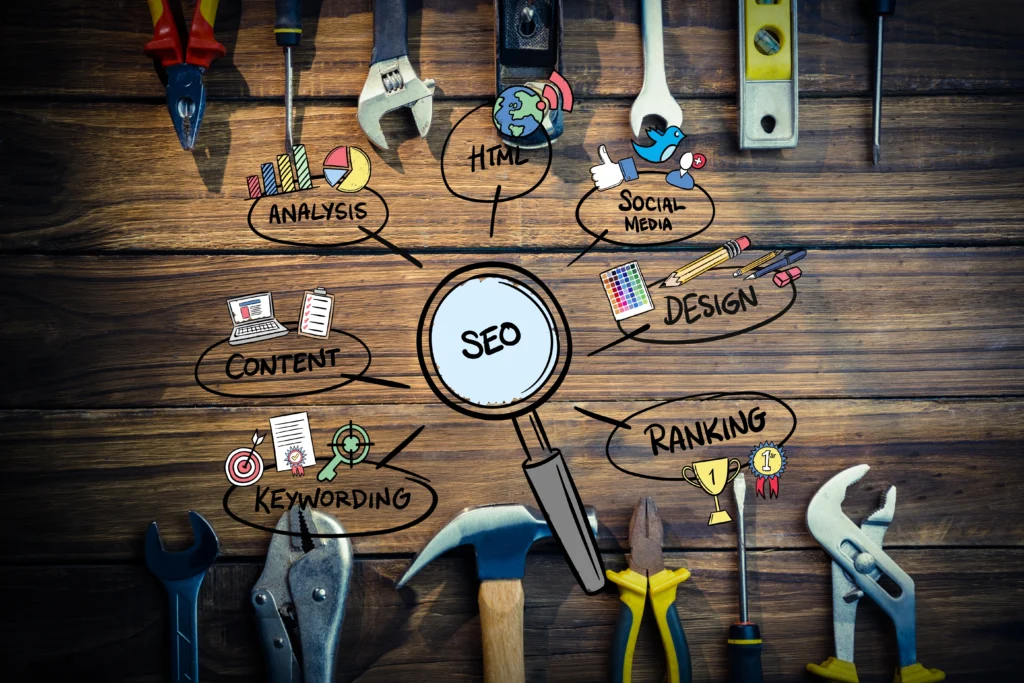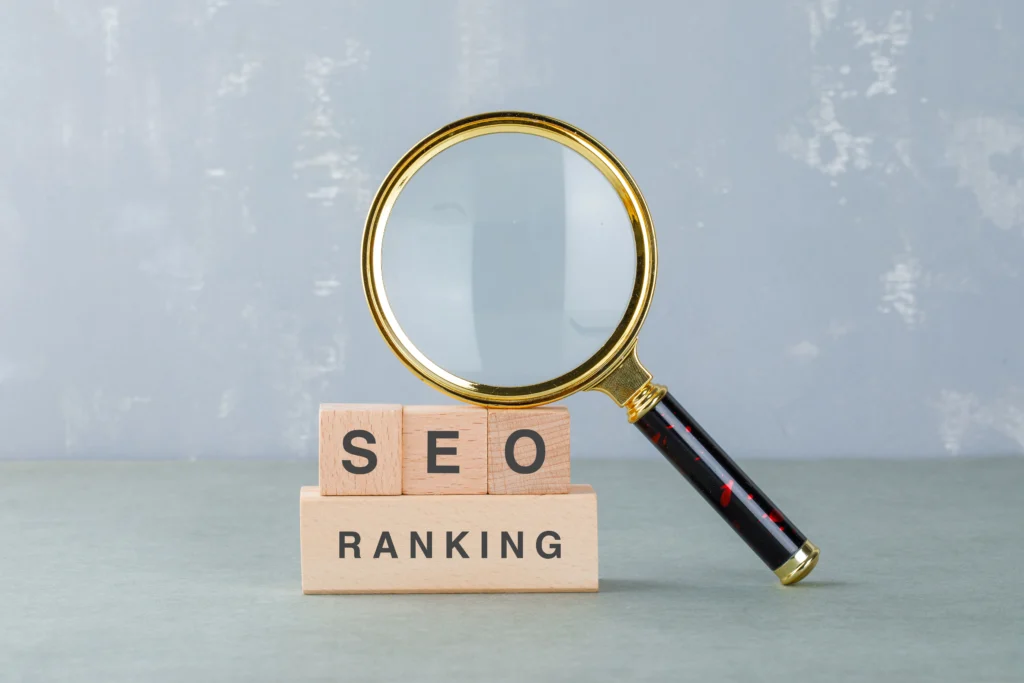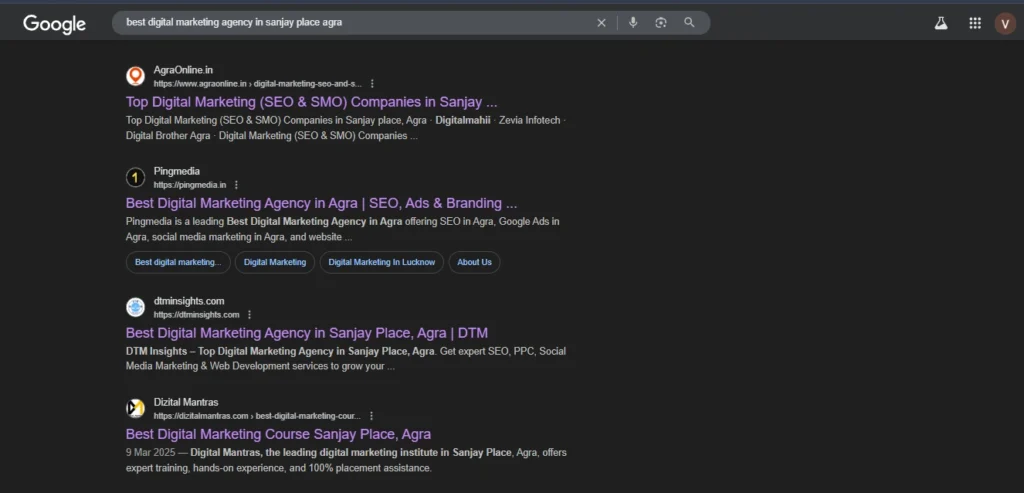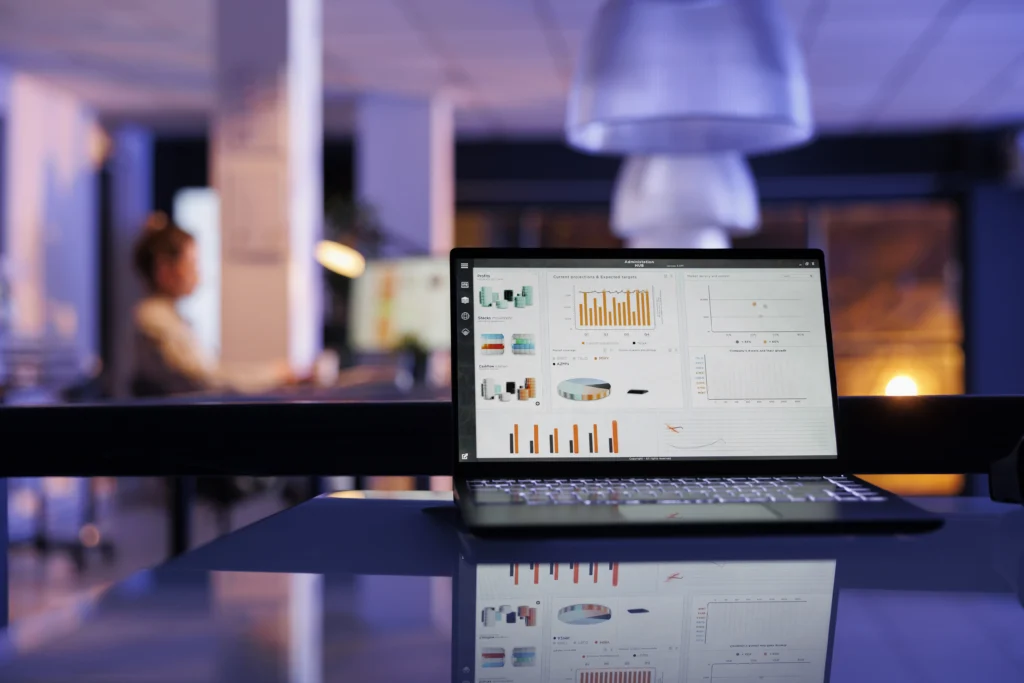Introduction
Have you ever wondered why some websites always seem to appear on the first page of Google while others are lost somewhere in the abyss of search results? That’s the power of SEO (Search Engine Optimization) at work. For beginners, the concept of SEO can feel overwhelming. But when broken down into its basic components, it’s actually straightforward and incredibly powerful.
In simple terms, SEO(Search Engine Optimization) is the process of making your website more visible on search engines like Google, Bing, or Yahoo. The higher your site ranks, the more people will find it, and the more traffic you’ll receive—without spending a single rupee on ads.
In this guide, we will cover everything from basic definitions to advanced SEO strategies, including keyword research, content optimization, technical SEO, local SEO, and even case studies showing how SEO(Search Engine Optimization) can transform a business. By the end of this guide, you’ll have a clear roadmap to start improving your website’s visibility and driving real results.
What is SEO(Search Engine Optimization)?

Definition in Simple Terms
SEO stands for Search Engine Optimization, which is the process of improving your website so that search engines rank it higher on search result pages. The goal is to make your website easier for search engines to crawl, index, and understand, while also providing value to your visitors.
Think of SEO like a bridge between your website and potential visitors. Without this bridge, even the best website may go unnoticed.
SEO(Search Engine Optimization) as a Digital Marketing Pillar
SEO is one of the core pillars of digital marketing. Alongside social media, email marketing, and paid ads, SEO(Search Engine Optimization) ensures your website is discoverable to people actively searching for your products or services. Unlike paid ads, which stop generating traffic the moment you stop paying, SEO(Search Engine Optimization) provides long-term, sustainable traffic.
Why SEO(Search Engine Optimization) Matters
Organic Traffic vs Paid Traffic
While paid traffic can provide instant visitors, SEO(Search Engine Optimization) focuses on organic traffic, which is free and highly targeted. Organic traffic tends to convert better because visitors are actively looking for solutions or information, not just browsing randomly.
Cost-Effectiveness of SEO(Search Engine Optimization)
Investing in SEO can save money in the long run. Paid campaigns require ongoing budgets, whereas SEO(Search Engine Optimization) builds authority and visibility over time. A well-optimized website can continue attracting traffic for years with minimal ongoing cost.
Building Long-Term Authority
High-ranking websites are seen as authoritative sources by users and search engines. This trust translates into higher credibility, better conversion rates, and loyal visitors.
How Search Engines Work
To understand SEO, you need to know how search engines operate. There are three main steps:
Crawling
Search engines use bots called crawlers or spiders to explore the web. These bots follow links from one page to another, discovering new and updated content. Imagine it like a librarian walking through every aisle in a library, cataloging books and adding them to a giant index.
Indexing
Once a page is discovered, it is indexed. This means it is stored in the search engine’s massive database. Only indexed pages can appear in search results. Pages that are blocked or have errors won’t be indexed.
Ranking

Finally, search engines use complex algorithms to rank pages. They consider hundreds of factors like relevance, quality, user experience, site authority, backlinks, and content depth. The goal is to show users the most useful and trustworthy pages for their queries.
Types of SEO(Search Engine Optimization)
SEO is not a one-size-fits-all process. There are three main types:
White Hat SEO
These are ethical strategies that follow search engine guidelines. Examples include:
- Creating high-quality content
- Earning natural backlinks
- Optimizing for mobile devices and speed
Black Hat SEO
These are unethical shortcuts that try to manipulate search engines. Examples include:
- Keyword stuffing
- Hidden text or cloaking
- Buying low-quality backlinks
While black hat tactics may provide short-term gains, they can result in penalties or even removal from search results.
Grey Hat SEO
Grey hat SEO is a mix of both. It’s not strictly against guidelines but can be risky. Examples:
- Spinning content slightly
- Using private blog networks for backlinks
Keyword Research

Keywords are the foundation of SEO. They tell search engines what your content is about.
What Are Keywords?
Keywords are the terms or phrases users type into search engines to find information. For example:
- Short-tail keyword: “SEO”
- Long-tail keyword: “SEO tips for beginners in 2025”
How to Find the Right Keywords
Use tools like:
- Google Keyword Planner (free)
- Ahrefs or SEMRush (paid)
- Ubersuggest (freemium)
Focus on keywords with high relevance, reasonable search volume, and low competition.
Short-Tail vs Long-Tail Keywords
- Short-tail: Broad, high-volume, competitive. Example: “digital marketing”
- Long-tail: Specific, lower-volume, easier to rank. Example: “digital marketing strategies for small businesses in Agra”
Tip: Beginners should target long-tail keywords first, as they are easier to rank and attract highly targeted traffic.
On-Page SEO
On-page SEO involves optimizing elements on your website.
Content Optimization
High-quality, relevant content is key. Ask yourself:
- Does this answer the user’s query?
- Is it easy to read and structured?
- Does it provide real value?
Meta Titles and Descriptions
These appear in search results and influence click-through rates. Use actionable, keyword-rich titles and compelling descriptions.
Header Tags and Keyword Placement
Use H1, H2, H3 tags to structure your content. Include keywords naturally without stuffing.
Images and Multimedia
Optimize images with alt text and compress them for fast loading. Videos and infographics can also boost engagement and time spent on your page.
Internal Linking
Link related pages within your site to improve navigation and distribute link authority.
Off-Page SEO
Off-Page SEO refers to activities outside your website that influence search rankings. While On-Page SEO focuses on content and structure, Off-Page SEO builds your site’s authority, credibility, and trustworthiness.
Backlink Strategies

Backlinks are links from other websites to yours. They are one of the most important ranking factors. Think of backlinks as votes of confidence; the more quality votes you have, the more search engines trust your website.
Types of backlinks:
- Editorial backlinks: Naturally earned when someone references your content.
- Guest posting: Writing articles on other websites with a link back to your site.
- Resource backlinks: Appearing in guides, lists, or directories relevant to your niche.
Example: A local digital marketing blog in Agra wrote a guest post on a popular business website. Within three months, their organic traffic grew by 60%, demonstrating the power of strategic backlinks.
Social Signals
While social media doesn’t directly influence rankings, it drives traffic, engagement, and shares, which indirectly improve SEO(Search Engine Optimization).
Tips:
- Share your content on Facebook, Instagram, LinkedIn, and Twitter.
- Encourage sharing and comments.
- Collaborate with influencers in your niche.
Case Study: A small jewelry brand posted Instagram reels linking to their product blog. Increased shares resulted in higher Google traffic, boosting sales by 40% in two months.
Technical SEO
Technical SEO ensures that your website is crawlable, fast, secure, and user-friendly. Without proper technical SEO, even high-quality content may fail to rank.
Mobile-First Indexing

Google predominantly uses the mobile version of your site for ranking. A site that isn’t mobile-friendly will lose visibility.
Tips:
- Use responsive design
- Test with Google’s Mobile-Friendly Test
- Simplify navigation for mobile users
Website Speed Optimization
Page speed is a key ranking factor. Slow sites increase bounce rates and reduce conversions.
Tips to Improve Speed:
- Compress images without losing quality
- Use browser caching and CDN
- Minimize CSS, JavaScript, and HTML
Example: A blog reduced load time from 6 seconds to 2.5 seconds. Organic traffic increased by 45% within three months.
Crawlability and XML Sitemaps
Search engines need to understand your website structure. An XML sitemap lists all your pages for crawlers.
Tips:
- Submit sitemap to Google Search Console
- Avoid broken links
- Use a clear URL structure
HTTPS and Security
Secure websites (HTTPS) rank higher than non-secure sites. Security builds trust with visitors and search engines.
Tips:
- Install SSL certificate
- Regularly update plugins and CMS
- Use secure passwords and firewalls
Schema Markup & Structured Data
Structured data helps search engines understand your content and can result in rich snippets.
Example: Recipe websites using schema markup show ratings, cooking time, and images directly in search results, increasing click-through rates.
Local SEO
Local SEO helps businesses rank in location-based searches, especially for people nearby.
Importance for Small Businesses
If someone searches “digital marketing agency in Agra,” a business optimized for local SEO will appear in the Local Pack, maps, and organic results.
Benefits:
- Increased foot traffic
- Better engagement with local audience
- Higher conversions
Google My Business Optimization
Google My Business (GMB) is crucial for local SEO.
Tips:
- Complete all fields (address, phone, website, hours)
- Add high-quality images
- Encourage customer reviews
- Post updates regularly
Example: A local bakery optimized their GMB profile, resulting in a 50% increase in in-store orders in just 2 months.
Local Citations and Reviews
Local citations are mentions of your business on directories or websites. Consistent NAP (Name, Address, Phone) details help search engines trust your business.
Tips:
- Use directories like Justdial, Yelp, and Sulekha
- Respond to reviews professionally
- Encourage positive customer reviews
Content Marketing & SEO(Search Engine Optimization)
High-quality content drives traffic, engagement, and backlinks. It’s the bridge between users and search engines.
Types of SEO Content
- Blog articles
- How-to guides
- Infographics
- Video tutorials
- Podcasts
Example: A tech blog published detailed “how-to” guides for beginners. Within 6 months, organic search contributed 70% of total traffic, demonstrating the impact of content-driven SEO.
Optimizing Content for SEO
- Conduct keyword research before writing
- Use headers (H1, H2, H3) for structure
- Include images and videos
- Add internal and external links
- Update content regularly
Measuring SEO Success
Measuring SEO(Search Engine Optimization) performance is critical to understand what works and what doesn’t. Without tracking, your efforts may go unnoticed, and opportunities for improvement may be missed.
Key SEO Metrics
- Organic Traffic – The number of visitors coming from search engines.
- Keyword Rankings – Positions of your targeted keywords in SERPs.
- Bounce Rate – Percentage of users leaving after viewing one page; a lower rate indicates engagement.
- Time on Page & Pages per Session – Shows how users interact with your content.
- Conversions – Tracking leads, sales, or other goals.
Using Google Analytics & Search Console
Google Analytics helps track visitor behavior, sessions, demographics, and conversion rates.
Google Search Console provides:
- Index coverage reports
- Performance of individual keywords
- Backlink data
- Crawl errors

Example: A small e-commerce site noticed a high bounce rate on product pages via Google Analytics. By improving page speed and adding better product descriptions, engagement increased by 35% and sales grew by 20%.
Common SEO Mistakes to Avoid
Beginners often make mistakes that hinder SEO performance.
- Ignoring Mobile Optimization – Mobile-first indexing requires responsive design.
- Keyword Stuffing – Overloading content with keywords can harm rankings.
- Duplicate Content – Repeated content reduces authority.
- Slow Website – Page speed directly affects rankings and conversions.
- Neglecting Local SEO – Missing opportunities in location-specific searches.
- Skipping Analytics – Without tracking, improvements are guesswork.
Example: A blog ignored mobile optimization and saw a drop in traffic by 25% after Google rolled out mobile-first indexing.
Advanced SEO Techniques
To stay competitive, beginners should also understand advanced SEO strategies:
LSI Keywords & Semantic SEO
Latent Semantic Indexing (LSI) keywords are related terms that help search engines understand content context.
- Example: For the keyword “SEO,” LSI keywords include “search engine optimization tips,” “website ranking,” and “digital marketing strategy.”
User Experience (UX) Optimization
Google prioritizes websites that provide a great user experience.
- Fast-loading pages
- Easy navigation
- Clear calls-to-action
- Engaging multimedia
AI Tools for SEO(Search Engine Optimization)
AI-powered tools help:
- Generate content ideas
- Analyze competitors
- Automate keyword tracking
Example: A blog used AI and Seo tools to identify trending long-tail keywords. Their organic traffic grew 70% in 4 months.
Voice Search Optimization
With smart devices, voice search is growing. Optimize content for conversational queries.
- Use natural language
- Include FAQs in content
- Target long-tail keywords
Step-by-Step SEO Roadmap for Beginners
Here’s a beginner-friendly month-wise roadmap:
Month 1:
- Learn basic SEO concepts
- Set up Google Analytics & Search Console
- Conduct keyword research
Month 2:
- Optimize website structure (headers, URLs, internal links)
- Improve page speed and mobile responsiveness
- Start publishing quality blog posts
Month 3:
- Build backlinks via guest posts and collaborations
- Optimize meta titles and descriptions
- Implement local SEO strategies
Month 4+:
- Track metrics and adjust strategies
- Update old content regularly
- Explore advanced techniques like AI SEO and voice search
Tip: Consistency is key. SEO(Search Engine Optimization) is a long-term strategy, and results compound over time.
Case Studies:-
Comprehensive SEO(Search Engine Optimization) Case Studies Table
| Case Study | Industry/Niche | Strategy Implemented | Results Achieved | Lesson Learned |
|---|---|---|---|---|
| 1 | Fitness Blog | Targeted long-tail keywords, on-page optimization, internal linking, social media promotion | Organic traffic ↑ 250%, Avg. session ↑ 3:15 min, Affiliate revenue ↑ 200% | Long-tail keywords + on-page SEO drive significant growth |
| 2 | Local Restaurant | Google My Business optimization, customer reviews, local blog content, directory citations | Local pack rankings for 10+ keywords, Foot traffic ↑ 40%, Online reservations ↑ 35% | Local SEO boosts visibility & offline traffic |
| 3 | E-Commerce Product Launch | Competitor analysis, SEO-friendly product pages, backlinks, social media & email promotion | Top 5 ranking for target keywords, Organic sales ↑ 120%, Bounce rate ↓ 28% | Combining content, backlinks & promotion ensures product success |
| 4 | Educational Website | Course-specific landing pages, video & infographics, structured data, guest posts | Organic traffic ↑ 300%, Course enrollment ↑ 180%, Featured snippets obtained | Multimedia + structured data + backlinks improve engagement & ranking |
| 5 | SaaS Startup | Keyword research, long-form content, optimized landing pages, guest blogging | Lead generation ↑ 250%, First-page ranking for 15 keywords, Average ranking from #35 → Top 10 | SEO-driven content + targeted landing pages generate high-quality leads |
| 6 | Digital Marketing Agency (Agra) | Local SEO, GMB optimization, review collection, blog content | Local inquiries ↑ 50%, Website traffic ↑ 70%, New clients ↑ 30% | Local SEO drives leads & business growth |
| 7 | Tech Accessories Blog | Targeted content, backlink building, content promotion | Organic traffic ↑ 150%, Engagement ↑ 45%, Revenue ↑ 200% | Combining high-quality content with backlinks increases authority |
| 8 | Jewelry E-Commerce | Long-tail keyword optimization, image & product SEO, backlink building | Organic traffic ↑ 150%, Revenue ↑ 120%, Bounce rate ↓ 30% | Long-tail SEO + backlinks help small e-commerce stores grow |
| 9 | Personal Finance Blog | Keyword targeting, internal linking, content marketing | Organic traffic ↑ 300%, Subscribers ↑ 200% | Consistent content + SEO-focused structure grows traffic & authority |
| 10 | Local Bakery | GMB optimization, customer reviews, social promotion | Foot traffic ↑ 50%, Online orders ↑ 35% | Optimized GMB + reviews improve visibility & customer engagement |
Key Takeaways from These Case Studies
- Long-tail keywords are essential for blogs, small businesses, and e-commerce.
- Local SEO significantly boosts visibility for location-based businesses.
- High-quality content combined with on-page optimization drives organic traffic.
- Backlinks are critical for authority and ranking improvements.
- Technical SEO and structured data improve user experience and ranking.
- Consistency and monitoring ensure sustained growth.
Case Study 1: Fitness Blog Growth
Background:
A health and fitness blog aimed at beginners struggled to attract visitors despite posting weekly content.
Strategy Implemented:
- Conducted detailed keyword research targeting long-tail phrases like “beginner workout routines at home.”
- Optimized on-page SEO, including meta titles, descriptions, and headers.
- Added internal linking to related articles to improve navigation.
- Promoted content on social media for initial traffic.
Results:
- Organic traffic grew 250% within 6 months.
- Average session duration increased from 1:30 to 3:15 minutes.
- Revenue from affiliate products grew 200%.
Lesson Learned: Targeted long-tail keywords combined with on-page optimization can drive significant growth even for small blogs.
Case Study 2: Local Restaurant SEO(Search Engine Optimization)
Background:
A family-owned restaurant in Jaipur wanted to attract more customers via Google search.
Strategy Implemented:
- Optimized Google My Business (GMB) listing with accurate NAP (Name, Address, Phone) and high-quality images.
- Encouraged customers to leave reviews.
- Created location-specific blog content like “Best vegetarian dishes in Jaipur.”
- Built citations on local directories such as Justdial and Sulekha.
Results:
- Appeared in the Local Pack for 10+ relevant keywords.
- Foot traffic increased 40% within 3 months.
- Online table reservations increased by 35%.
Lesson Learned: Local SEO can dramatically impact small businesses by increasing visibility to nearby customers.
Case Study 3: E-Commerce Product Launch
Background:
An online tech accessories store wanted to launch a new product and attract organic traffic.
Strategy Implemented:
- Conducted competitor analysis to identify keyword gaps.
- Created SEO-friendly product pages with unique descriptions, FAQs, and optimized images.
- Built high-quality backlinks from tech blogs and forums.
- Promoted content through social media and email campaigns.
Results:
- Product page ranked top 5 for target keywords within 2 months.
- Organic sales increased by 120% in the first quarter.
- Bounce rate reduced from 55% to 28%.
Lesson Learned: Combining content optimization, backlink building, and promotion ensures a successful product launch.
Case Study 4: Educational Website Expansion
Background:
An online learning platform wanted to expand its reach to new courses and students.
Strategy Implemented:
- Developed course-specific landing pages optimized for target keywords.
- Used video content and infographics to enhance user engagement.
- Implemented structured data and schema markup for rich snippets.
- Published guest posts and external links to increase authority.
Results:
- Organic search traffic increased 300% in 6 months.
- Course enrollment increased by 180%.
- Pages received featured snippets in Google results.
Lesson Learned: Structured content, multimedia, and backlinks can boost visibility and engagement for educational platforms.
Case Study 5: SaaS Startup Lead Generation
Background:
A SaaS startup providing project management software wanted to generate leads organically.
Strategy Implemented:
- Conducted keyword research targeting phrases like “best project management tool for startups.”
- Created long-form blog content addressing pain points and solutions.
- Optimized landing pages with CTA buttons for conversions.
- Built backlinks via industry partnerships and guest blogging.
Results:
- Website appeared on first page for 15 high-intent keywords within 5 months.
- Lead generation increased by 250%.
- Average page ranking improved from #35 to top 10 for main keywords.
Lesson Learned: SEO-driven content and targeted landing pages can generate high-quality leads for startups without heavy ad spending.
E-Commerce SEO(Search Engine Optimization) Success
A small online jewelry store optimized its website for long-tail keywords, improved site speed, and built backlinks. Results after 6 months:
- Organic traffic ↑ 150%
- Revenue ↑ 120%
- Bounce rate ↓ 30%
Blog Growth via SEO(Search Engine Optimization)
A personal finance blog focused on content marketing, keyword targeting, and internal linking. After one year:
- Organic traffic ↑ 300%
- Newsletter subscribers ↑ 200%
- Authority and trust with readers increased significantly
Local Business Ranking Improvement
A digital marketing agency in Agra optimized their Google My Business profile and collected reviews. After 3 months:
- Website traffic ↑ 70%
- Local inquiries ↑ 50%
- New clients increased by 30%

Future SEO(Search Engine Optimization) Trends
SEO(Search Engine Optimization) is evolving rapidly. Here are trends to watch:
- AI & Automation – Tools like ChatGPT for content creation and analysis
- Voice & Visual Search – Optimize for voice queries and image-based search
- E-E-A-T – Focus on Experience, Expertise, Authority, and Trust
- Mobile-First SEO – Essential for all websites
- Video SEO – YouTube and video content are increasingly important
Conclusion
SEO(Search Engine Optimization) is no longer optional—it’s a necessity for digital success. While it may seem complex, breaking it into smaller steps makes it manageable.
Start with basic keyword research, on-page optimization, and high-quality content, then gradually explore off-page SEO, technical improvements, and advanced strategies. Monitor your progress with analytics, avoid common mistakes, and stay updated with emerging trends.
With patience and consistency, SEO(Search Engine Optimization) can drive sustainable traffic, higher conversions, and long-term business growth.
FAQs
How long does it take to see results from SEO?
Typically 3–6 months, depending on competition, website age, and strategy.
Can I do SEO without technical knowledge?
Yes. Beginners can start with content and keyword optimization, then gradually learn technical aspects.
How much does SEO cost for beginners?
You can start with free tools. Professional services may range $200–$1000/month.
Is content or backlinks more important for SEO?
Both are essential: content attracts visitors, backlinks build authority.
Can SEO guarantee first-page ranking on Google?
No. SEO increases chances, but competition and algorithm updates prevent guarantees.
What is the difference between organic and paid traffic?
Organic traffic comes from search results, while paid traffic comes from ads.
Should I focus on local SEO or global SEO?
It depends on your business. Local businesses benefit more from local SEO.
How do I find long-tail keywords?
Use tools like Google Keyword Planner, Ubersuggest, or SEMrush for low-competition long-tail phrases.
Can social media affect SEO?
Indirectly. Social engagement increases traffic and brand awareness, which can improve rankings.
What is the role of AI in SEO?
AI helps with keyword research, content ideas, trend analysis, and automation of repetitive tasks.


